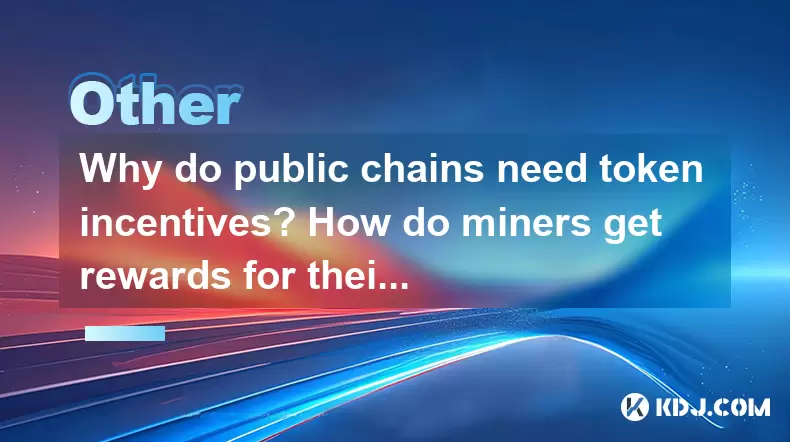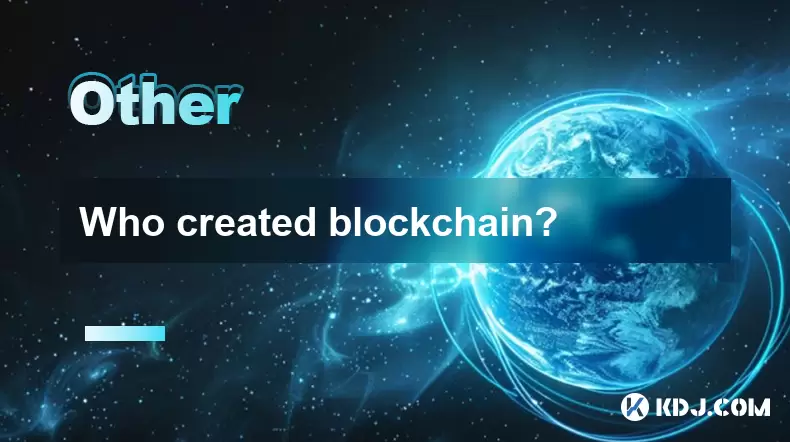-
 Bitcoin
Bitcoin $115200
-2.68% -
 Ethereum
Ethereum $3601
-5.16% -
 XRP
XRP $3.035
-2.96% -
 Tether USDt
Tether USDt $0.9997
-0.04% -
 BNB
BNB $764.5
-5.43% -
 Solana
Solana $168.1
-5.92% -
 USDC
USDC $0.9998
-0.02% -
 Dogecoin
Dogecoin $0.2090
-4.80% -
 TRON
TRON $0.3272
-0.49% -
 Cardano
Cardano $0.7306
-5.00% -
 Hyperliquid
Hyperliquid $39.16
-12.22% -
 Stellar
Stellar $0.3967
-4.96% -
 Sui
Sui $3.566
-5.95% -
 Chainlink
Chainlink $16.55
-6.57% -
 Bitcoin Cash
Bitcoin Cash $552.3
-3.90% -
 Hedera
Hedera $0.2516
-4.69% -
 Avalanche
Avalanche $21.99
-5.75% -
 Toncoin
Toncoin $3.621
-0.28% -
 Ethena USDe
Ethena USDe $1.000
-0.03% -
 UNUS SED LEO
UNUS SED LEO $8.951
0.02% -
 Litecoin
Litecoin $105.9
-3.59% -
 Shiba Inu
Shiba Inu $0.00001232
-5.00% -
 Polkadot
Polkadot $3.640
-5.55% -
 Uniswap
Uniswap $9.048
-7.03% -
 Monero
Monero $301.8
-1.51% -
 Dai
Dai $0.9999
-0.01% -
 Bitget Token
Bitget Token $4.334
-3.66% -
 Pepe
Pepe $0.00001064
-6.17% -
 Cronos
Cronos $0.1367
-5.78% -
 Aave
Aave $259.2
-4.59%
Why do public chains need token incentives? How do miners get rewards for their contributions
Public chains use token incentives to motivate miners, who secure the network by solving puzzles and adding blocks, earning rewards in the blockchain's native cryptocurrency.
May 17, 2025 at 06:56 pm

Why do public chains need token incentives? How do miners get rewards for their contributions
Public blockchains, or public chains, are decentralized networks that allow anyone to participate in the validation and recording of transactions. To ensure the smooth operation and security of these networks, public chains often rely on token incentives. These incentives are crucial for motivating participants, such as miners, to contribute their computational resources and maintain the integrity of the blockchain. In this article, we will explore why public chains need token incentives and how miners receive rewards for their contributions.
The Role of Token Incentives in Public Chains
Token incentives play a vital role in the functioning of public chains. They serve as a mechanism to encourage participants to engage in activities that benefit the network, such as mining, validating transactions, and securing the blockchain. Without these incentives, there would be little motivation for individuals to dedicate their resources to the network, which could lead to a decline in its performance and security.
In a public chain, tokens are typically the native cryptocurrency of the blockchain. These tokens are used to reward participants for their contributions and can be traded on cryptocurrency exchanges. The value of these tokens is often tied to the health and adoption of the blockchain, creating a symbiotic relationship between the network and its participants.
How Miners Contribute to Public Chains
Miners are a crucial component of public chains, particularly those that use a Proof of Work (PoW) consensus mechanism. Miners compete to solve complex mathematical puzzles, and the first to solve the puzzle gets to add a new block of transactions to the blockchain. This process, known as mining, requires significant computational power and energy.
By mining, participants help to secure the network and validate transactions. The more miners there are, the more secure the blockchain becomes, as it becomes increasingly difficult for any single entity to control the majority of the network's computational power.
The Process of Mining and Earning Rewards
The process of mining and earning rewards involves several steps:
- Setting up mining equipment: Miners need to acquire specialized hardware, such as ASICs (Application-Specific Integrated Circuits), designed for efficient mining.
- Joining a mining pool: Many miners join mining pools to increase their chances of earning rewards. In a mining pool, participants combine their computational power and share the rewards based on their contribution.
- Running mining software: Miners use specialized software to connect their hardware to the blockchain network and start solving puzzles.
- Solving the puzzle: Miners compete to solve the cryptographic puzzle required to add a new block to the blockchain. The first miner to solve the puzzle gets to add the block and is rewarded with tokens.
- Receiving rewards: Once a block is added to the blockchain, the miner who solved the puzzle receives the block reward, which is a set amount of tokens. Additionally, miners may also receive transaction fees from the transactions included in the block.
The Importance of Token Rewards for Miners
Token rewards are essential for miners as they provide a financial incentive for their efforts. Without these rewards, miners would have little reason to dedicate their resources to the network, which could lead to a decline in the blockchain's security and performance.
The value of the tokens miners receive as rewards is influenced by various factors, including the demand for the cryptocurrency, the total supply of tokens, and the overall health of the blockchain. As the value of the tokens increases, miners are further incentivized to continue contributing to the network.
Different Consensus Mechanisms and Their Incentive Structures
While Proof of Work is the most well-known consensus mechanism, other mechanisms, such as Proof of Stake (PoS) and Delegated Proof of Stake (DPoS), also rely on token incentives. In PoS, validators are chosen to create new blocks based on the number of tokens they hold and are willing to "stake" as collateral. In DPoS, token holders vote for a select group of delegates who are responsible for validating transactions and creating new blocks.
Each consensus mechanism has its own incentive structure, but the underlying principle remains the same: participants are rewarded with tokens for their contributions to the network. This incentivizes them to act in the best interest of the blockchain and helps to maintain its security and integrity.
Frequently Asked Questions
Q: Can miners earn rewards from multiple public chains simultaneously?
A: Yes, miners can participate in multiple public chains simultaneously, provided they have the necessary hardware and resources. However, they must ensure that their mining equipment is compatible with the specific algorithms used by each blockchain.
Q: How do token incentives affect the decentralization of public chains?
A: Token incentives can both promote and challenge decentralization. On one hand, they encourage a diverse group of participants to contribute to the network, which can enhance decentralization. On the other hand, if a small group of miners or validators control a significant portion of the network's resources, it can lead to centralization.
Q: Are there any risks associated with relying on token incentives for public chains?
A: Yes, there are risks associated with token incentives. If the value of the tokens declines significantly, miners may be less incentivized to contribute to the network, which could impact its security. Additionally, if the token rewards are not distributed fairly, it can lead to centralization and potential security vulnerabilities.
Q: How do public chains ensure the fair distribution of token rewards?
A: Public chains employ various mechanisms to ensure the fair distribution of token rewards. These may include adjusting the block reward over time, implementing a maximum supply of tokens, and using algorithms that prevent any single entity from controlling the majority of the network's resources.
Disclaimer:info@kdj.com
The information provided is not trading advice. kdj.com does not assume any responsibility for any investments made based on the information provided in this article. Cryptocurrencies are highly volatile and it is highly recommended that you invest with caution after thorough research!
If you believe that the content used on this website infringes your copyright, please contact us immediately (info@kdj.com) and we will delete it promptly.
- Bitcoin, Solana, and Altcoin Season: What's Hot and What's Not?
- 2025-08-02 07:10:12
- Toncoin, Rollblock, and the Token Offering Landscape: A New York Minute
- 2025-08-02 07:10:12
- Meme Coins: Long Term Earn and Hold Strategy
- 2025-08-02 06:30:12
- Ethereum, DEX Trading, and the $1 Trillion Milestone: A New Era?
- 2025-08-02 06:50:12
- Hong Kong's Stablecoin Scene: New Rules, Market Jitters, and Future Hopes
- 2025-08-02 06:35:46
- Dogecoin's Price Support Under Fire: Can It Fend Off Competitors?
- 2025-08-02 04:30:12
Related knowledge

What is the difference between a blockchain and a database?
Aug 01,2025 at 09:36pm
Understanding the Core Structure of a BlockchainA blockchain is a decentralized digital ledger that records data in a series of immutable blocks linke...

What is a hash in a blockchain?
Aug 02,2025 at 05:28am
Understanding the Concept of Hash in BlockchainA hash in the context of blockchain technology refers to a unique digital fingerprint generated by a cr...

What is a hash in a blockchain?
Aug 02,2025 at 04:43am
Understanding the Concept of Hash in BlockchainA hash in the context of blockchain technology refers to a unique digital fingerprint generated by a cr...

Who created blockchain?
Aug 02,2025 at 05:15am
What Is Blockchain and Why Does Its Origin Matter?Understanding who created blockchain begins with recognizing what blockchain actually is. Blockchain...

How to start a business using blockchain?
Jul 28,2025 at 12:36am
Understanding the Basics of Blockchain TechnologyBefore diving into the process of starting a business using blockchain, it's crucial to understand wh...

What is a token on the blockchain?
Jul 21,2025 at 07:00am
Understanding the Concept of a TokenIn the realm of blockchain technology, a token is a digital representation of an asset or utility that exists on a...

What is the difference between a blockchain and a database?
Aug 01,2025 at 09:36pm
Understanding the Core Structure of a BlockchainA blockchain is a decentralized digital ledger that records data in a series of immutable blocks linke...

What is a hash in a blockchain?
Aug 02,2025 at 05:28am
Understanding the Concept of Hash in BlockchainA hash in the context of blockchain technology refers to a unique digital fingerprint generated by a cr...

What is a hash in a blockchain?
Aug 02,2025 at 04:43am
Understanding the Concept of Hash in BlockchainA hash in the context of blockchain technology refers to a unique digital fingerprint generated by a cr...

Who created blockchain?
Aug 02,2025 at 05:15am
What Is Blockchain and Why Does Its Origin Matter?Understanding who created blockchain begins with recognizing what blockchain actually is. Blockchain...

How to start a business using blockchain?
Jul 28,2025 at 12:36am
Understanding the Basics of Blockchain TechnologyBefore diving into the process of starting a business using blockchain, it's crucial to understand wh...

What is a token on the blockchain?
Jul 21,2025 at 07:00am
Understanding the Concept of a TokenIn the realm of blockchain technology, a token is a digital representation of an asset or utility that exists on a...
See all articles

























































































